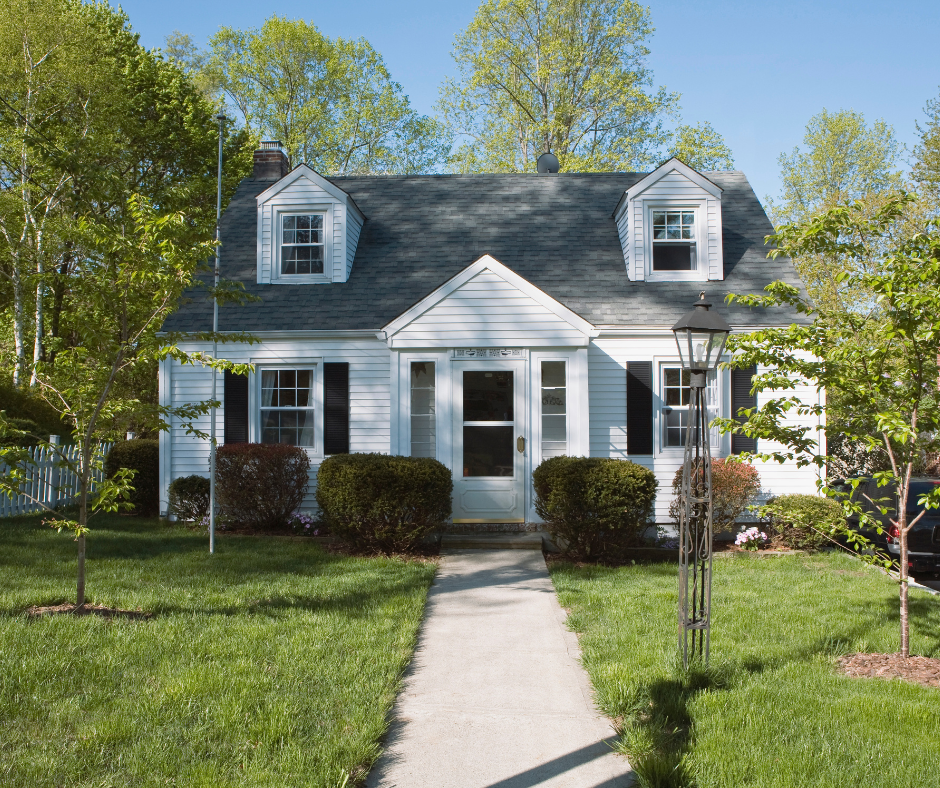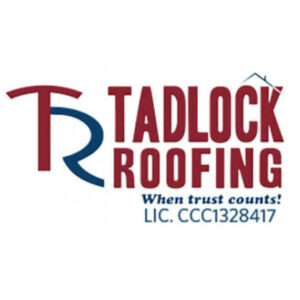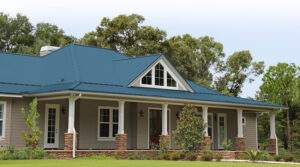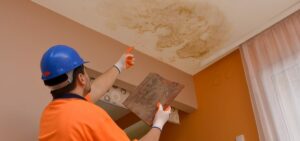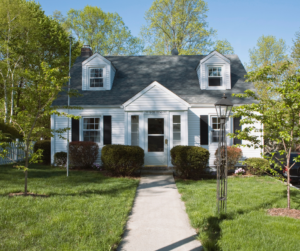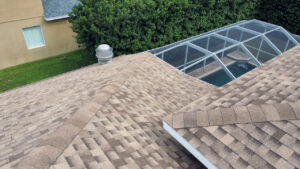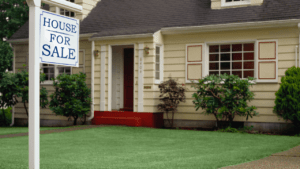Key Takeaways:
• Light-colored or reflective roofing materials reduce heat absorption
• Proper attic insulation and ventilation are crucial for temperature control
• Roof coatings and green roofing options can further improve cooling
• Regular maintenance helps roofs perform better during hot months
• Professional inspections ensure your roof’s cooling potential is maximized
Florida homeowners know all too well how intense the summer sun can be. Your roof takes the brunt of that heat, and if it’s not properly protected, it can drive up your cooling costs and reduce your home’s comfort. Thankfully, there are proven ways to keep your roof cool and energy-efficient. Here’s how Tadlock Roofing helps Florida residents stay cool, season after season.
How to Keep Your Roof Cool in Summer: Use Light-Colored or Reflective Roofing Materials
Dark roofs absorb heat, while light-colored or reflective roofs deflect it. A standard roof, such as a built up roof or conventional roofs with dark colors, typically absorbs more heat than cool roofing options. Built up roofs are made of multiple layers, including a base sheet and a surface layer with mineral granules or asphalt shingles; these components can affect how much heat the roof absorbs, with dark colors and traditional materials leading to more heat retention. Upgrading to a cool roofing material, such as white TPO for flat roofs or solar-reflective shingles, can significantly lower roof surface temperature. Applying a reflective coating to the surface layer of a standard roof or built up roof can help reflect more sunlight and reduce heat transfer. Owens Corning’s ENERGY STAR®-rated shingles, available through Tadlock Roofing, are specifically designed to reflect more sunlight and reduce heat transfer into your home. When choosing roofing materials, remember that light colors reflect sunlight and help keep roofs cooler, while dark colors absorb more heat, resulting in higher roof temperatures.
1. Improve Attic Insulation
Several factors influence how much heat enters or escapes through your attic, including insulation type, ventilation, and roof color.
Your attic is your home’s first line of defense against heat. Proper insulation keeps hot air from entering your living spaces. It also helps retain heat inside during winter, improving year-round comfort. We recommend adding high-R-value insulation that resists heat flow, especially in older homes where insulation might be outdated or insufficient.
Effective insulation can help balance both cooling and heating needs, reducing overall energy costs.
2. Ensure Adequate Ventilation
A well-ventilated attic helps remove hot air before it heats your home. Ridge vents, soffit vents, and attic fans all play a role in maintaining airflow and reducing attic temperatures. Our team evaluates and installs ventilation systems that keep your roof and home cooler all year long.
Learn More: Roof Inspection Services
3. Apply a Reflective Roof Coating
Reflective coatings bounce solar rays away from your roof. These coatings work by reflecting sunlight and emitting absorbed heat, which helps keep the roof surface cooler. They are specifically designed to reflect the sun’s light, reducing the amount of heat transferred into the building. Elastomeric coatings are a popular choice in Florida for flat and low-slope commercial and residential roofs. They offer UV protection and can extend the lifespan of your roofing system while keeping interiors cooler.
Related Blog: The Real Pros and Cons of Metal Roofing
4. Maintain Your Roof Regularly
Debris, algae, damage, and mold growth can all reduce your roof’s cooling efficiency. Regular maintenance and timely roof repair help prevent moisture buildup, which can lead to mold growth and compromise roof integrity. Routine cleaning and inspections help maintain reflective surfaces and identify issues early. Tadlock’s RPM Program provides scheduled maintenance that keeps your roof in peak condition.
5. Trim Overhanging Trees
Strategic shade can lower your roof’s temperature. Planting or maintaining tall trees around your home can provide strategic shade. Tall trees help block direct sunlight from hitting your roof, reducing heat absorption and keeping your home cooler. Trimming back trees reduces leaf buildup while allowing just enough natural shade to cool your roof without causing damage or excess debris.
Homeowner Tip: Schedule seasonal roof assessments to check for tree-related risks.
6. Consider Green Roofing Solutions
A green roof, also known as a rooftop garden, is a living roof system that is eco-friendly and an excellent insulator. The vegetation on a green roof acts as a protective layer, shielding the underlying roof from direct sunlight and heat while providing additional insulation. While not ideal for all Florida homes, green roofing is an innovative way to reduce roof surface temperature and improve stormwater management. Ask Tadlock Roofing if your home qualifies.
Explore Other Innovations: Sustainable Roofing Solutions
7. Energy Savings and Cost
Investing in a cool roof can lead to substantial energy savings and long-term cost benefits. By reflecting more sunlight and absorbing less heat, cool roofs help keep your building cooler, which means your air conditioning system doesn’t have to work as hard. This reduction in energy consumption can translate to lower energy bills, especially during the hottest months. While the initial cost of installing a cool roof may vary depending on the roofing material, roof size, and your location, the long-term savings often outweigh the upfront investment. According to the Cool Roof Rating Council, building owners can save up to 20% on their energy bills with a cool roof. Plus, many local governments and utility companies offer incentives or rebates for energy-efficient roofing, making it even more affordable to upgrade. Over time, the combination of reduced energy bills, less strain on your air conditioning, and a longer-lasting roof can make cool roofing a smart financial choice for any building.
8. Cool Roofing Technologies
Today’s cool roofing technologies offer innovative ways to keep your building comfortable and energy efficient. Reflective coatings are a popular option, easily applied to existing roofs to boost solar reflectance and minimize heat buildup. Single-ply membranes, such as TPO or PVC, are advanced roofing materials designed for both new construction and roof retrofits, providing excellent insulation and cooling performance. Green roofs take a different approach by adding a living layer of vegetation, which not only insulates but also helps manage stormwater and reduce the urban heat island effect. Other cutting-edge solutions include cool colored roofing materials that reflect more sunlight even in darker shades, solar panels that generate renewable energy while shading the roof, and roof misting systems that use water to cool the roof surface on demand. With so many cool roofing technologies available, building owners can find the right solution to reduce energy consumption, lower heat buildup, and create a more sustainable environment.
9. Case Studies and Real-World Examples
Real-world results show that cool roofs make a measurable difference in energy use and comfort. For example, research from the U.S. Department of Energy found that cool roofs can cut energy consumption by up to 25% in hot climates, helping buildings stay cooler with less reliance on air conditioning. The Cool Roof Rating Council reports that cool roofs can also lower the urban heat island effect by as much as 3°F, making entire neighborhoods more comfortable during heat waves. Cities like New York have adopted cool roof initiatives, requiring new buildings to use cool roofing materials to reduce heat buildup and energy consumption. On a national scale, Australia’s cool roof program has helped lower energy use and combat high temperatures in urban areas. These case studies and programs highlight how cool roofs are not just a trend—they’re a proven solution for reducing energy consumption, minimizing heat buildup, and creating more comfortable, sustainable buildings.
Keep Your Cool with Tadlock Roofing
Tadlock Roofing has helped Florida homeowners stay comfortable and protected since 1980. Whether you’re exploring energy-efficient shingle options or need an attic insulation upgrade, our certified experts are here to help.
Schedule your free roof inspection today. Call (855) 964-7663 or contact us online.
Frequently Asked Questions (FAQs)
How does a cool roof help with energy efficiency? A cool roof helps keep your house cool by reflecting more sunlight and absorbing less heat, which reduces reliance on your air conditioner. This can save money on your electric bill and overall energy costs.
Can I make my existing roof cooler without replacing it? Yes. Adding a reflective roof coating, improving attic insulation, and enhancing ventilation are all effective upgrades. You can also install a roof misting system or use the mist setting on a garden hose to cool the roof surface on a sunny day.
Are reflective roof coatings suitable for all roof types? They are most effective on flat or low-slope roofs, where coatings can be applied over a base sheet. For single-ply membranes, mechanical fasteners or chemical adhesives are often used to attach the material. For pitched roofs, reflective shingles or metal roofing are better options.
How often should I maintain or inspect my roof during summer? At least once before the summer season begins and after major storms. Regular maintenance helps keep your roof cool and protects the roof surface from solar heat and damage from the sun. Tadlock’s RPM Program ensures regular checkups year-round.
Is it worth investing in attic insulation for cooling? Absolutely. Insulation helps block heat transfer from the roof, maintaining a more stable indoor temperature and reducing HVAC usage.
What type of roof is best for hot climates like Florida? Metal roofs, light colored roofing, and tile roofs with good ventilation and insulation perform best in hot, sunny regions. Installing a new roof with these features can be beneficial for both homes and commercial buildings.

